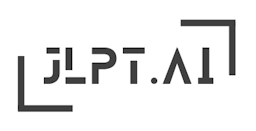

N1
音読み:kei
訓読み:tsugu, mama-
ケイkei
つ.ぐtsugu
まま-mama-
Succession, inherit
Imagine a thread '糸' that represents a family lineage, which is passed down through the generations. The thread is carefully woven into a tapestry '織', symbolizing the succession and continuation of family traditions.
Though '継' is not as common as some other kanji at the N1 level, it still appears in the JLPT exam occasionally. Understanding its readings and meanings can be beneficial for tackling vocabulary and reading comprehension questions.
彼は家族の会社を継ぐ予定です。
He plans to inherit the family business.
かれはかぞくのかいしゃをつぐよていです。
kare wa kazoku no kaisha o tsugu yotei desu.
彼女は母の仕事を継いでいる。
She is succeeding her mother's work.
かのじょはははのしごとをついでいる。
kanojo wa haha no shigoto o tsuide iru.
父は大切な家族の伝統を継ぎました。
My father carried on the important family tradition.
ちちはたいせつなかぞくのでんとうをつぎました。
chi wa taisetsu na kazoku no dentou o tsugimashita.